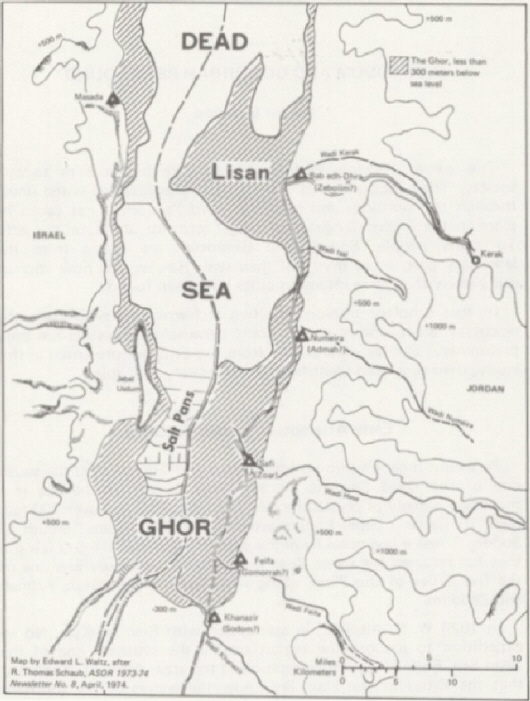Have Sodom And Gomorrah Been Found? -- By: Bryant G. Wood
Journal: Bible and Spade (First Run)
Volume: BSP 03:3 (Summer 1974)
Article: Have Sodom And Gomorrah Been Found?
Author: Bryant G. Wood
BSP 3:3 (Summer 1974) p. 65
Have Sodom And Gomorrah Been Found?
The names “Sodom and Gomorrah” are bywords in today’s society. Their reputation as centers of wickedness has lasted down through the centuries and even the word “sodomy” has taken its place in the English language as a legal term for unnatural sex acts. To many people, Sodom and Gomorrah are places from the legendary past, more mythical than real. However, it now appears quite likely that these infamous cities have been found.
In true scholary fashion, the two archaeologists who made the discovery are cautious at this point because their results are only preliminary. But, as we shall see from the evidence presented in this study, their suggested identification seems very probable.
Early Attempts to Locate the Cities
Persistent local tradition places Sodom and Gomorrah at the south end of the Dead Sea. At the southwest corner of the Sea is a mountain, largely of crystalline salt, five miles long and over 700 feet high. Its name is Jebel Usdum which, in Arabic, means “Mount of Sodom.” Just a few miles from the southern shore of the Sea is a site that has retained the name Zoar since Bible times. Zoar was one of the five Cities of the Plain, along with Sodom, Gomorrah, Admah and Zeboiim.
In 1924 W. F. Albright, in association with Rev. M. Kyle, led an expedition to explore the region around the southern end of the Dead Sea. Following his investigation of the area, Albright concluded that the Cities of the Plain lay under the waters of the southern section of the Dead Sea.
The Dead Sea is divided into two parts by the Lisan, the “Tongue.” North of the Lisan the water is extremely deep, as much
BSP 3:3 (Summer 1974) p. 66

THE SOUTHERN GHOR AND PROPOSED LOCATIONS OF THE CITIES OF THE PLAIN
BSP 3:3 (Summer 1974) p. 67
as 1400 feet in some places, while south of the Lisan it is only three to thirty feet in depth. Since it is known that the level of the Dead Sea, which has no outlet, has slowly risen over the years, Albright postulated that the area south of the Lisan was dry land during Abraham’s day when Sodom and Gomorrah were thriving cities.
Albright’s theory was borne out in the spring of 1960 when missionary Ralph E. Baney made a reconnaissance study of the floor of the Dead Sea using Sonar and diving equipment. Baney’s expedition revealed the presence of small trees in growth position at a depth of 23 feet. This means that when the trees were alive, the level (-403 meters) was such that the entire southern basin was exposed.
You must have a subscription and be logged in to read the entire article.
Click here to subscribe
